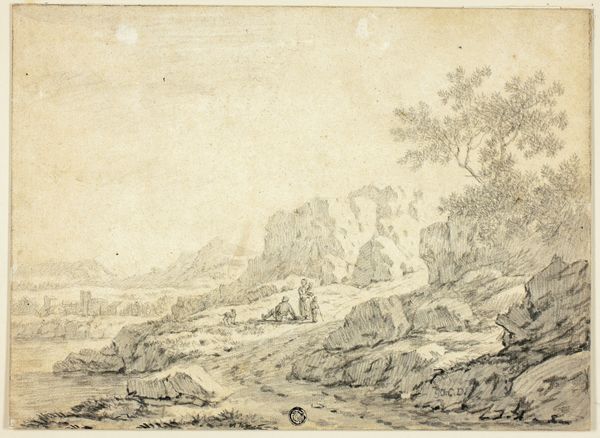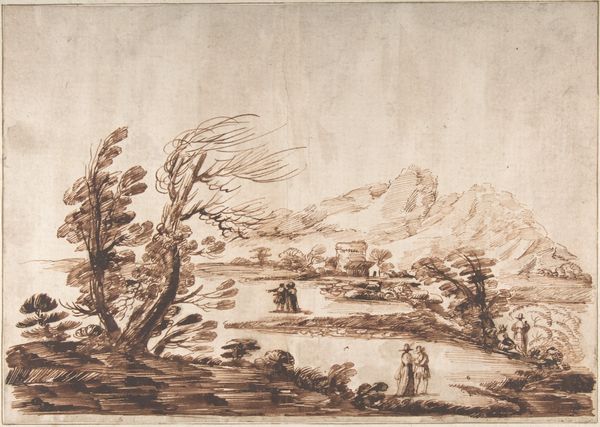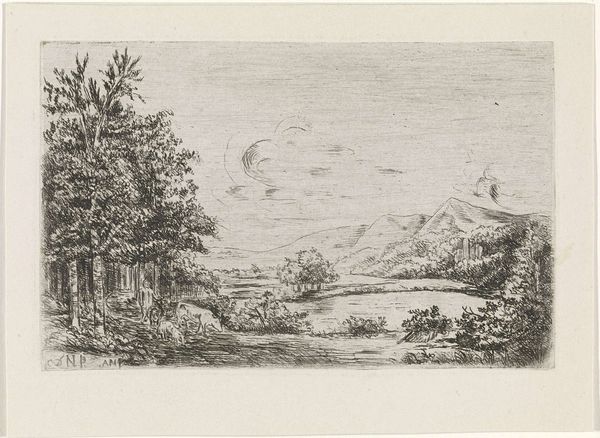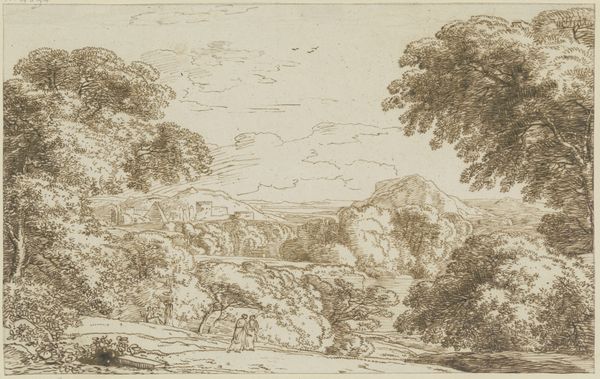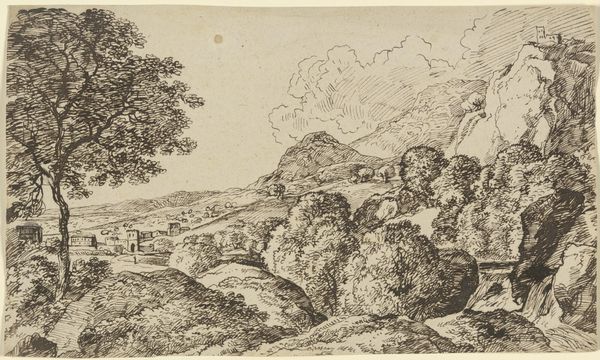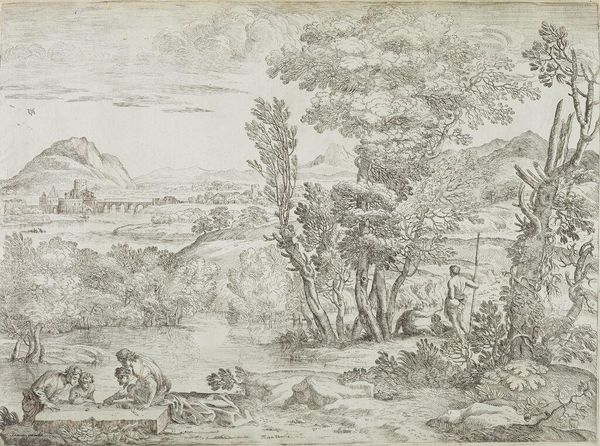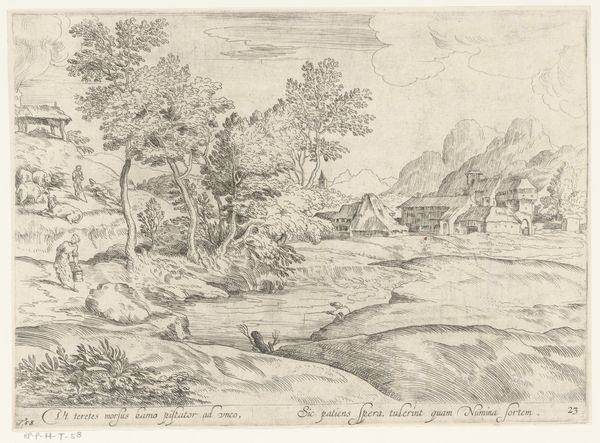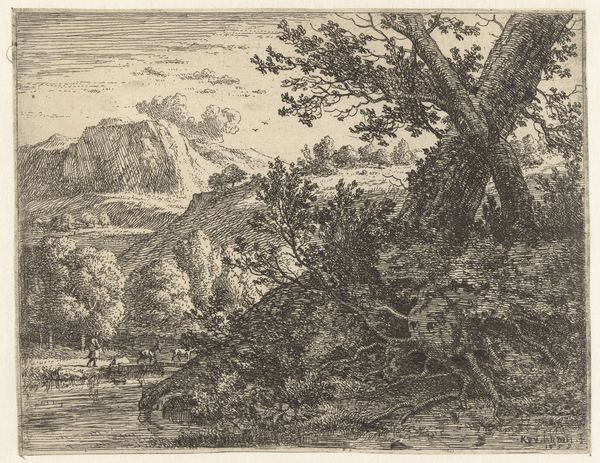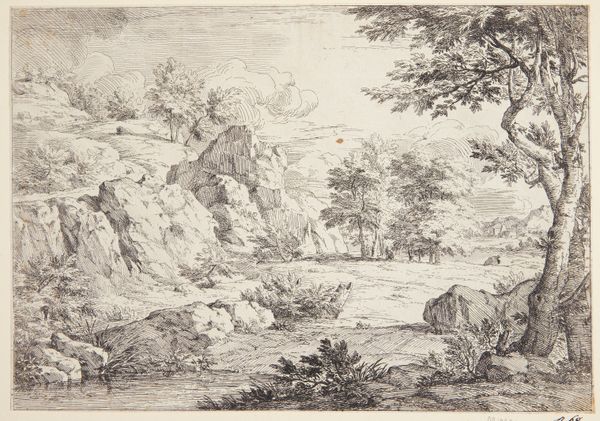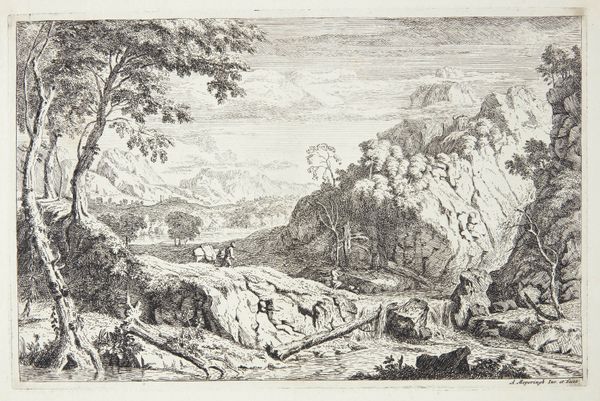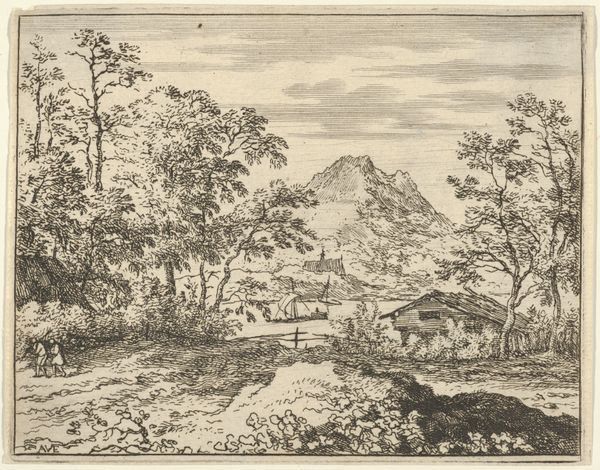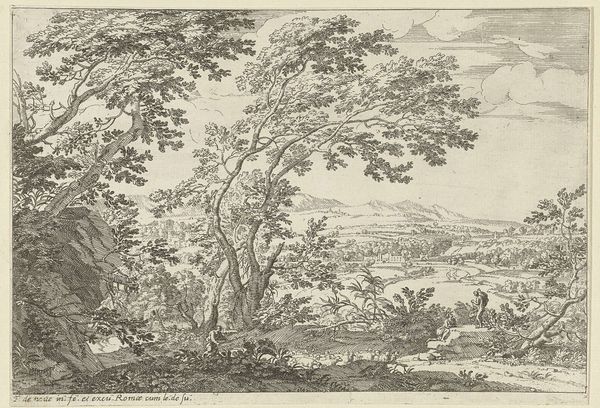
Dimensions: support: 180 x 227 mm
Copyright: CC-BY-NC-ND 4.0 DEED, Photo: Tate
Curator: Let's consider Alexander Cozens' "Landscape Composition, with Cliff to Left," part of the Tate Collections. It's a delicate, almost dreamlike scene. Editor: Oh, I love the hazy feel. It's like a memory, faded and sweet, rendered in sepia tones. Makes me want to write a poem about quiet mornings. Curator: Cozens, working in the late 18th century, was deeply interested in the picturesque and the sublime. We might consider how this etching engages with early Romantic ideals. Notice how the composition invites the viewer to traverse the space, but also gestures to the insignificance of humankind in relation to Nature. Editor: Absolutely. It's small, but it feels vast. And I love the roughness of the etching – makes it feel handmade, intimate. It's like Cozens is sharing a secret. Curator: Perhaps, a shared contemplation of the human condition. It's fascinating how this piece continues to spark dialogues across centuries, especially when thinking about our relationship with nature. Editor: True. It's more than just a pretty landscape. It's a feeling, a mood. A reminder that even in stillness, there's depth.
Comments
tate 7 months ago
⋮
http://www.tate.org.uk/art/artworks/cozens-landscape-composition-with-cliff-to-left-t08858
Join the conversation
Join millions of artists and users on Artera today and experience the ultimate creative platform.
tate 7 months ago
⋮
In this drawing Cozens has used pen and ink to describe the various planes in the cliff face and distant hills. His technique of short parallel lines at different angles is especially suited to the reed pen. Sketchily applied soft red chalk underdrawing is visible through the pen and ink line work. Heavier pen pressure with denser ink lines combine with the horizontal line work to give prominence to the foreground. The sky with its faint, thin, horizontal ink lines takes second place to this desolate landscape. Gallery label, August 2004

